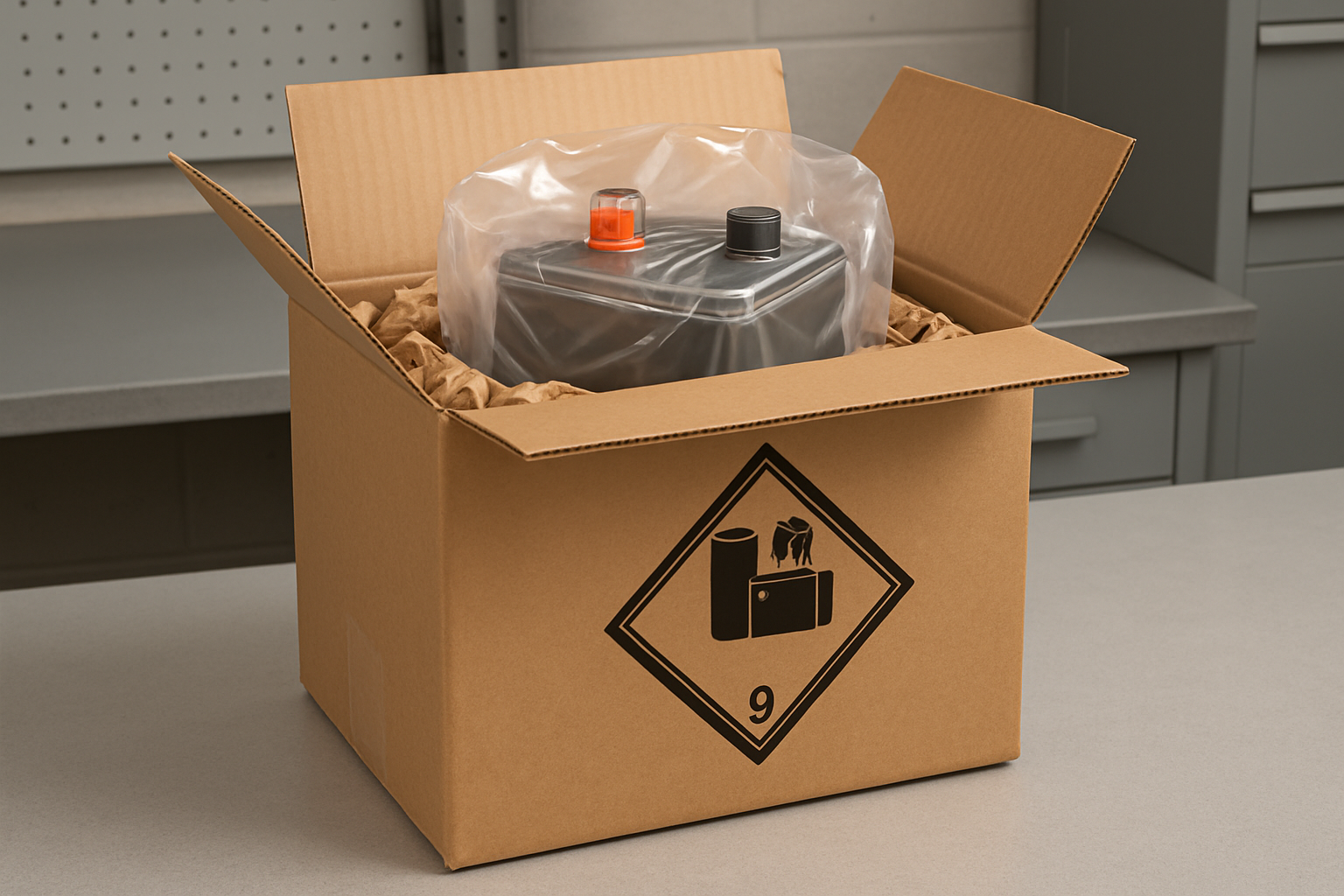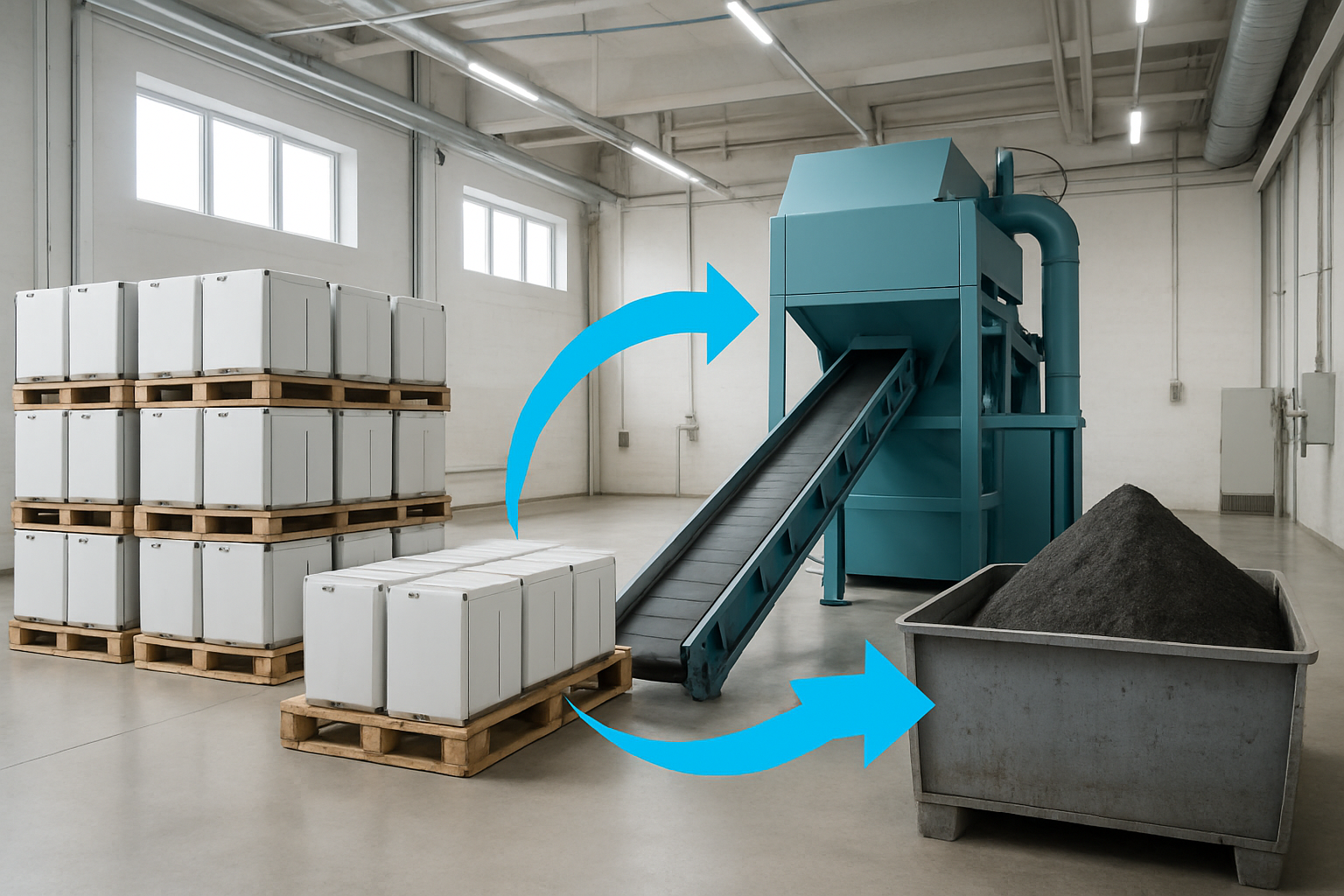The rapid growth of solar energy and electric vehicles means more lithium-ion batteries are in use than ever before. As these batteries reach the end of their service life, they create a new challenge: how to move them safely for recycling or disposal. Spent Li-ion packs are not ordinary waste; they contain residual energy and can pose a significant fire risk if mishandled. Understanding the proper procedures for packaging and transport is critical for safety and environmental responsibility.
Understanding the Fire Risk in Spent Lithium-Ion Batteries
The primary danger associated with lithium-ion batteries is a phenomenon known as thermal runaway. This is a rapid, uncontrolled increase in temperature that can lead to fire, smoke, and even explosions. Even batteries considered 'spent' often retain enough charge to initiate this dangerous chain reaction.
What is Thermal Runaway?
Thermal runaway occurs when an internal short circuit, physical damage, or exposure to high heat causes a battery cell's temperature to rise. This initial heat triggers further chemical reactions, generating more heat in a self-perpetuating cycle. The pressure inside the cell builds until it ruptures, releasing flammable electrolytes and hot gases. In a multi-cell battery pack, the failure of one cell can easily cascade to adjacent cells, creating a much larger and more intense event.
Key Risk Factors During Transport
The journey from a decommissioned site to a recycling facility is filled with potential hazards. Several factors can increase the risk of a thermal event during transit:
- Physical Damage: Vibrations from road transport, impacts from improper handling, or crushing from poor stacking can damage the delicate internal structures of a battery cell, leading to a short circuit.
- Short Circuits: If unprotected battery terminals come into contact with each other or another conductive surface, a short circuit can occur, generating intense heat.
- High Temperatures: Leaving battery packs in a hot vehicle or in direct sunlight can raise their internal temperature, increasing the likelihood of thermal runaway.

Essential Packaging Principles for Safe Transport
Proper packaging is your first and most effective line of defense against fire risk. The goal is to isolate each battery pack and protect it from physical and electrical hazards. Following a systematic approach to packaging minimizes the chances of an incident.
The Importance of Individual Protection
Never transport loose battery packs together in a single container. Each pack must be individually protected to prevent its terminals from touching anything conductive. You can achieve this by covering the terminals with non-conductive tape or by placing each battery in its own separate, sealed plastic bag. This simple step is fundamental to preventing external short circuits.
Choosing the Right Outer Packaging
The outer container must be strong enough to protect the batteries from the rigors of transport. Use rigid, durable containers made from materials like wood, fiberboard, or plastic. For many types of lithium-ion batteries, especially those being shipped for disposal, regulations may require UN-rated packaging that has been tested to meet specific performance standards. The container should be in good condition, with no punctures or structural weaknesses.
Using Cushioning and Absorbent Materials
Once inside the outer container, batteries must be secured to prevent them from shifting or colliding during transit. Fill any empty space with a non-conductive cushioning material, such as vermiculite or perlite. This material not only provides padding but can also absorb any potential electrolyte leakage from a damaged cell, containing the hazard within the package.
Regulatory and Labeling Requirements
Shipping spent lithium-ion batteries is regulated as a hazardous material (Hazmat) activity. Compliance with national and international regulations is not optional. These rules are designed to protect everyone involved in the transportation chain, from handlers to the public.
Navigating Transportation Regulations
Different rules apply depending on the condition of the batteries—whether they are simply used or are classified as damaged, defective, or recalled (DDR). Regulations like those from the U.S. Department of Transportation (DOT) or the international ADR agreement provide specific instructions for classification, packaging, and handling. Always verify the specific requirements for your location and the mode of transport you are using.
Disclaimer: This content provides general information and does not constitute legal advice. You should consult with a certified hazardous materials transportation professional to ensure full compliance with all applicable regulations.
Correct Labeling and Documentation
Proper communication is key to safety. Every package containing lithium-ion batteries must be clearly labeled to identify its contents and associated hazards. This includes the Class 9 hazardous material label and markings that state "LITHIUM-ION BATTERIES FOR DISPOSAL" or "LITHIUM-ION BATTERIES FOR RECYCLING." Accurate shipping papers must accompany the shipment, providing emergency responders with critical information in case of an incident.
A Forward Look: Improving the Recycling Ecosystem
Safe transport is a critical link in creating a circular economy for batteries. As the volume of spent batteries grows, so does the need for an efficient and safe reverse logistics chain. According to a report from the International Energy Agency, The Role of Critical Minerals in Clean Energy Transitions, establishing clear guidance on the collection and transport of end-of-life batteries is crucial. Efficiently getting these packs to recyclers allows for the recovery of valuable materials like lithium, cobalt, and nickel. The IEA estimates that by 2040, recycled materials from spent batteries could reduce the combined primary supply requirements for these minerals by around 10%. This reduces reliance on new mining and lowers the environmental footprint of battery production. Furthermore, the IEA notes that designing batteries for easier disassembly from the start can greatly simplify and secure the end-of-life process.
Final Thoughts on Proactive Safety
Moving spent lithium-ion battery packs is a task that demands careful planning and execution. By understanding the risk of thermal runaway, implementing robust packaging protocols, and adhering to all regulatory requirements, you can manage these risks effectively. Proactive safety measures protect your personnel, your property, and the environment. They also ensure that these valuable resources complete their journey to a recycling facility, where they can begin a new life in the next generation of clean energy technology.
Frequently Asked Questions
Can I ship a visibly damaged or swollen li-ion battery pack?
No, not in the usual way. Damaged, defective, or recalled (DDR) batteries have much stricter shipping requirements. They often need special, fire-resistant packaging and carrier approval. Never attempt to ship a swollen or punctured battery without consulting a hazardous materials specialist.
Do I need special training to package spent batteries for transport?
Yes, for commercial shipments. Regulations typically require that anyone involved in shipping hazardous materials, including lithium-ion batteries, receive appropriate training. This training covers classification, packaging, labeling, and documentation to ensure safety and compliance.
What kind of fire extinguisher should be available for a lithium-ion battery fire?
A Class D fire extinguisher is recommended for fires involving lithium metals. For lithium-ion batteries, a water-based or foam extinguisher can be used to cool the battery and prevent the fire from spreading to surrounding materials. Sand or other dry chemical agents can also be used to smother smaller fires. Always consult your local fire department for specific guidance.
Is it acceptable to mix different types of batteries in the same shipping container?
This is generally not recommended. Mixing different battery chemistries can increase the risk of short circuits or adverse chemical reactions. It is best practice to sort batteries by type and condition before packaging them for shipment. This also streamlines the recycling process.





Leave a comment
All comments are moderated before being published.
This site is protected by hCaptcha and the hCaptcha Privacy Policy and Terms of Service apply.